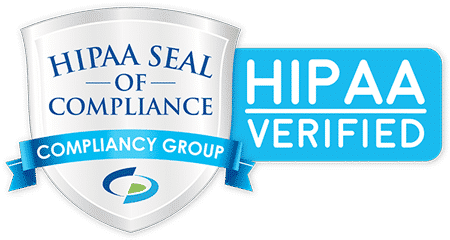Protecting Corporate Data from Personal Account Synchronization
In today’s rapidly evolving digital landscape, safeguarding corporate data has never been more crucial, particularly with the introduction of Microsoft’s new OneDrive synchronization feature. This development, which allows the mixing of personal and business accounts, presents notable security risks in OneDrive, potentially leading to sensitive data being inadvertently exposed or misused. As business owners and IT professionals navigate this change, understanding the implications of personal account synchronization becomes vital to maintaining robust corporate data protection. The feature, prompting users to sync personal accounts on business devices, may seem convenient but poses significant data privacy concerns if not managed properly. In this discussion, we delve into the potential business data risks and explore strategic IT security policies that can help mitigate these challenges, ensuring your organization’s information remains secure.
Understanding OneDrive Synchronization Risks
As organizations increasingly rely on cloud storage solutions, it’s crucial to understand the potential risks associated with OneDrive synchronization. This section explores the new Microsoft OneDrive feature, its inherent security risks, and the challenges it poses to corporate data protection.
New Microsoft OneDrive Feature
Microsoft’s latest OneDrive feature, “Prompt to Add Personal Account to OneDrive Sync,” introduces a new level of convenience for users but also raises significant security concerns. This feature allows users to synchronize their personal OneDrive accounts with their business accounts on corporate devices.
The feature is designed to streamline file access and management for users who juggle both personal and professional data. However, this convenience comes at a potential cost to data security and corporate information governance.
By enabling easy synchronization between personal and business accounts, the feature inadvertently creates a bridge between two environments that are typically kept separate for security reasons. This blurring of lines between personal and professional data storage could lead to unintended data leaks or breaches if not properly managed.
Security Risks in OneDrive
The new OneDrive synchronization feature introduces several security risks that organizations need to be aware of. These risks stem from the potential for sensitive corporate data to be inadvertently or maliciously transferred to personal, unmanaged environments.
One of the primary concerns is the bypass of established security protocols. The feature lacks inherent controls, logging mechanisms, and corporate policies governing the synchronization of personal accounts on business devices. This absence of oversight creates a significant vulnerability in the organization’s data protection strategy.
Another risk is the potential for data exfiltration. With personal and business accounts synchronized, an employee could easily transfer sensitive corporate files to their personal OneDrive, either accidentally or intentionally. This could lead to data breaches, intellectual property theft, or compliance violations.
Lastly, the feature may complicate incident response and forensic investigations. If corporate data is mixed with personal data across multiple OneDrive accounts, it becomes more challenging to track and secure sensitive information in the event of a security incident.
Corporate Data Protection Challenges
The introduction of this OneDrive feature presents several challenges for corporate data protection. IT departments must now grapple with maintaining the security of sensitive information in an environment where personal and business data can easily intermingle.
One of the primary challenges is maintaining visibility and control over corporate data. When users can easily sync their personal and business accounts, it becomes more difficult for IT teams to track where sensitive information is stored and who has access to it.
Another significant challenge is ensuring compliance with data protection regulations. Many industries have strict requirements for data handling and storage. The ability to easily transfer data between personal and business accounts could potentially violate these regulations, leading to hefty fines and reputational damage.
Lastly, educating users about the risks associated with this feature and promoting responsible use presents its own set of challenges. Many employees may not fully understand the implications of syncing their personal and business accounts, making it crucial for organizations to implement comprehensive training programs.
Mitigating Synchronization Threats
To address the security risks posed by OneDrive’s new synchronization feature, organizations must implement robust mitigation strategies. This section explores IT security policies, data privacy solutions, and specific Microsoft OneDrive safeguards that can help protect corporate data.
IT Security Policies and Strategies
Implementing effective IT security policies and strategies is crucial in mitigating the risks associated with OneDrive synchronization. These policies should be comprehensive, clearly communicated, and strictly enforced across the organization.
One key strategy is to implement data classification policies. This involves categorizing corporate data based on its sensitivity and importance, and then applying appropriate security measures to each category. For instance, highly sensitive data might be restricted from synchronization altogether.
Another important policy is to establish clear guidelines for the use of personal accounts on corporate devices. This could include prohibiting the use of personal cloud storage accounts on work devices or requiring approval before syncing personal and business accounts.
Regular security audits and monitoring should also be part of the IT security strategy. This can help detect any unauthorized data transfers or suspicious synchronization activities, allowing for prompt intervention.
Data Privacy Concerns and Solutions
Addressing data privacy concerns is paramount when dealing with the risks of OneDrive synchronization. Organizations must find solutions that balance user convenience with robust data protection.
One effective solution is to implement Data Loss Prevention (DLP) tools. These tools can identify, monitor, and protect sensitive data across the organization’s cloud environment, including OneDrive. DLP policies can be set to prevent the transfer of sensitive data to personal accounts or to trigger alerts when such transfers are attempted.
Encryption is another crucial solution for protecting data privacy. Ensuring that all sensitive data is encrypted both in transit and at rest can significantly reduce the risk of unauthorized access, even if data is inadvertently synced to a personal account.
User education and awareness programs are also vital. Employees should be trained on the importance of data privacy, the risks of syncing personal and business accounts, and best practices for handling sensitive information.
Implementing Microsoft OneDrive Safeguards
Microsoft provides several built-in safeguards for OneDrive that organizations can leverage to enhance their data protection efforts. Implementing these safeguards can significantly mitigate the risks associated with the new synchronization feature.
One key safeguard is the use of conditional access policies. These allow organizations to control access to OneDrive based on factors such as user location, device compliance, and risk level. For example, synchronization could be allowed only from approved devices or locations.
Another important safeguard is the implementation of multi-factor authentication (MFA) for OneDrive access. This adds an extra layer of security, making it more difficult for unauthorized users to access synced data, even if they obtain a user’s credentials.
Lastly, organizations should consider using OneDrive’s versioning and file recovery features. These can help recover data in case of accidental deletion or malicious actions, providing an additional layer of protection against data loss.








